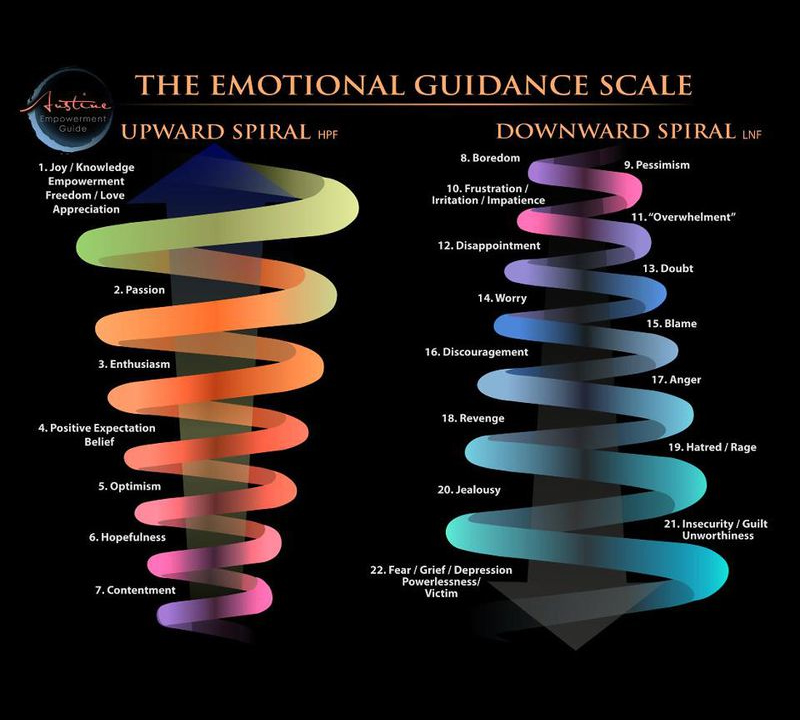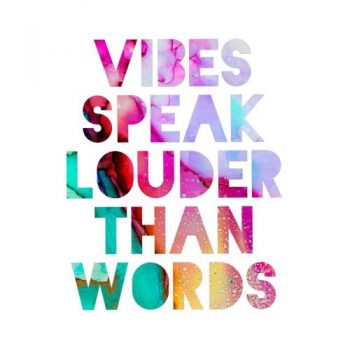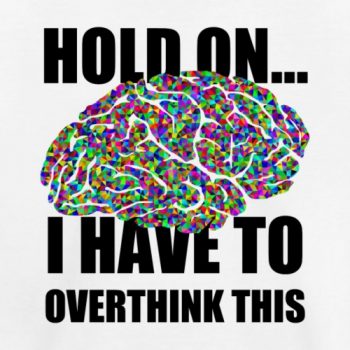What is the Emotional Guidance Scale?
The Emotional Guidance Scale, as explained by Abraham Hicks in the book “Ask and It Is Given,” is a scale of our feelings and emotions, in sequence from our highest vibrational feelings to our lowest. It is broken down into 22 of the most common emotions and divided into two sections: the upwards spiral and the downwards spiral:
Upward Spiral:
1. Joy/Appreciation/Empowered/Freedom/Love
2 . Passion
3 . Enthusiasm/Eagerness/Happiness
4 . Positive Expectation/Belief
5 . Optimism
6 . Hopefulness
7 . Contentment
Downward Spiral
8 . Boredom
9 . Pessimism
10. Frustration/Irritation/Impatience
11. Overwhelment
12. Disappointment
13. Doubt
14. Worry
15. Blame
16. Discouragement
17. Anger
18. Revenge
19. Hatred/Rage
20. Jealousy
21. Insecurity/Guilt/Unworthiness
22. Fear/Grief/Depression/Despair/Powerlessness
All too often when we are feeling down, we’re told things like “think positively” or “chin up”. But in reality the jump from such a low vibrational space to such a high one is usually impossible. What the emotional guidance scale teaches us is that there are many different emotional steps along the way to true joy, and that our only real job is to climb this ladder of emotions at whatever rate or speed we are comfortable with. It’s about doing what you can, with what you have, from where you are.
Thoughts Affect Emotions
Our thoughts affect our emotions and therefore it is only through thoughts that we are able to climb the emotional scale. The first and most critical step is to become aware of where you currently are on the scale and then consciously reach for a thought that can take you a little higher.
For example, when you are in a state of grief or depression (#22 on the emotional scale), getting angry (#17) might not seem very “enlightened” or “positive” but it is actually a huge improvement from where you started. By allowing yourself to get angry (and thinking thoughts that express that anger) you have already climbed several steps and improved your vibration.
Boredom (#8 on the scale) is another interesting example. As shown in the image above, its placement is pivotal – it is right in the middle of the two spirals. Meaning, the thoughts you choose from that point on can either spin you off into a downwards spiral, or help you climb out of the downwards one into the upwards one.
How to Think Your Way Up the Emotional Guidance Scale
Blogger, Maria Erving, gives a simple example of how to consciously choose thoughts and words that will help climb the scale at your own pace. In her words:
Let’s say you feel “disappointed” (#12) with someone. You are disappointed that he’s never on time for your get-togethers, he’s always late, and you feel disappointed, even a bit sad. Now would be a good time to see if you can invoke feelings of “irritation”(#10) within yourself by speaking/thinking: “It makes me really sad and disappointed that he’s always late. I feel that he’s not respecting me… wtf! It is sooo irritating that he thinks that I’m going to wait for him one more minute! I’ve had it with this behavior!”
Noticed how your emotion improved? (you went from #12 to #10)
Now, go even higher up:
“You know what? (still talking/thinking to yourself), I don’t care anymore. I’m leaving and he can just come and wait for me this time. I am going shopping instead. I’m perfectly fine with that”. (feeling “contentment” (#7) and perhaps a bit empowered, too (#1)
From there you just keep finding thoughts that improve your feelings, and when you find a new, improved state of mind, you let go of the old one!
“The spiritually enlightened person still experiences the full range of emotion, so what they have gained is the awareness and the ability to direct their thoughts in such a way that they can climb up the emotional scale at will.”
– Teal Swan







